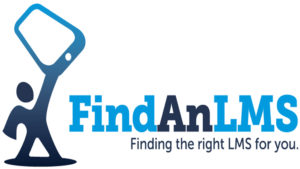
AP is responsible for engineering, product management, cloud operations, and IT across all Skillsoft and SumTotal products. He has extensive experience in supporting rapidly growing technology companies including General Manager and SVP of SaaS at SevOne where he was responsible for its on-demand/ SaaS business segment, after holding the position of SVP Engineering. Prior to SevOne, AP held senior technology positions including Group President in ACI Worldwide and Director of Software at IBM. AP has a PhD in Computer Science from Duke University, an MS in Computer Science from Washington State University and a BS in Computer Science from Jadavpur University, India.
Q: Percipio is a solid LXP, but how do you see the system becoming a differentiator in space?
Yes, Percipio has been gaining momentum for Skillsoft with over 1000 active customers on it. As is, Percipio differentiates in its out-of-the-box curation, its rich features on assessments, assignments, and reporting, and its embedded learning ELSA capability. Going forward, Percipio will host, aggregate, and manage customer’s content; it will have APIs such that any modern content authoring tool can publish to Percipio easily. The ability to aggregate custom content, public content, and Skillsoft content seamlessly will be a big advantage. Further, Percipio will interact with several Talent management platforms and will be able to recommend learning based on skills and competencies in a personalized manner. Dynamic learning paths can be created based on current skills and aspirational roles, fueling individual career development.
Q: I like Percipio’s mobile app, it does some things that are unique. Do you have a game plan or a roadmap of where you want the app to go? If yes, what are they?
Glad you like the Percipio mobile app experience. Our goal from the beginning has been to be the leading app by delivering best-in-class design, voice interface and offline capabilities. The mobile app roadmap includes capabilities like mobile learning re-enforcement notifications, live events, and live mentoring capabilities. In the near future, mobile will play a key role in user generated content with the ability to upload content directly to Percipio. When we think of mobile, we also go beyond the app. Percipio already works with the Amazon Alexa; we have plans to make Percipio work with AR and VR devices.
Q: From a technology standpoint, where do you see content going? In other words, today, content can mean anything, but none of it (excluding some interactive/engaging online courses) has maximized technology.
Fundamentally I see content becoming more and more interactive in different ways. The lines between ‘content’ and ‘media-rich application’ will begin to blur. Think of your Facebook stream. Various forms of media like photos, videos, and text are seamlessly assembled with interactive elements such as ‘like’, ‘comment’ and other applications for content consumers to share their reactions, opinions, emotional responses, etc. Overall, the stream is a personalized, media-rich application. I envision e-Learning content to be deeply interactive with seamless and in-context personalization. Interaction will include short quizzes, getting feedback, and more involved practice tests, and online labs.
The next step after interactive is adaptive. With emerging AI technologies, I see a form of ‘alternative ending’ movies appearing in e-learning. Content will be spliced in short segments and depending on user responses different pieces of content can be used. Each lesson, each user session will be unique depending on the user’s response or performance.
Q: How do you see SumTotal from a technology standpoint competing against systems such as those who say, “SumTotal is a traditional LMS”, implying that because they are newer they are better in terms of latest functionality? (which isn’t always accurate to begin with)
A ‘traditional LMS’ typically focused on certifiable consumption of mandated content in a regulatory environment. It focused more on measurements and reporting and less on the user’s experience. This continued for years and new products (e.g. LEP) emerged that focused on user’s experience, and more ‘pull’ model for learning where content is aggregated from many sources based on user demand. The emphasis in those systems was on self-development rather than measuring compliance. As investments in the newer systems increase, they are also being asked to have more sophisticated measurement and reporting for businesses to justify such investments. There is a certain convergence between a traditional LMS and an LEP.
In short, SumTotal is a progressive LMS. It has all the power of a traditional LMS where content can be prescribed and results tracked in detail, but it also now has a modern user experience, content aggregation, recommendations, and social features. Many of its traditional customers such as Cox Enterprises, Health Care Service Corporation, and PSAV are adopting the progressive LMS as it allows them to evolve and protect their investment and knowledge while evolving the user experience.
The LEP category will never replace the LMS category; but will also be not fully overtaken by the progressive LMS. The LEP does have a use case on its own where the focus is on rapid deployment, quick aggregation, and moderate measurements. They will co-exist often within the same company covering different departments or use cases. Our homes have ovens and toasters both, don’t they?
Q: There continues to be mixed results with mobile apps and with vendors in the learning system space. Even though the number of folks who have a smartphone, tablet etc. is extremely high, many vendors in the market are hesitant to even have a native app, let alone one that does on/off synch. What do you see as a reason to refrain?
Frankly there is no technical reason for this. Mobile apps are widely deployed, secure, and the correct way to use a SaaS application from a mobile device. The browsers on devices are limited at best. The key reason for the apparent slow adoption of mobile apps for learning is frankly change management that does not have much to do with the app itself. Companies are still struggling with deployment of mobile apps in a secure manner. Many of their single sign on systems need revamping and some companies are struggling to prioritize the investments needed to update their systems so they can adapt to the mobile experience expectations of their users and customers. There is also the added complexity faced by organizations that have multiple learning systems, and as a result, they require multiple learning apps.
From our customer sets we see very diverse behavior in adoption of mobile. One of our customers, a global electronics and mobile phone giant, relies almost exclusively on the mobile app to provide user access to the LMS. To ensure user adoption of the mobile app they have invested heavily in marketing the app internally and in delivering a branded mobile app experience to users.
Similarly, pilots, sales trainees, and theme-park workers, to name a few more examples, are all mobile at work and companies with those type of user populations are eagerly adopting the mobile app. Conversely, we have customers with a primary audience of office-based employees such as lab technicians, programmers, and chemists.
These customers by and large remain wedded to desktop access and don’t consider mobile an urgent or top priority investment. The rate of mobile app adoption depends to a large degree on the unique use case and relevance for each organization.

